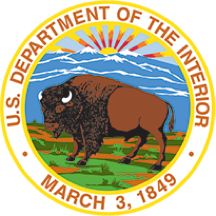News and Updates
Innovative work, news, and ideas from people and teams in government
Equity in action: GSA’s study on remote identity-proofing technologies
The Biden-Harris President’s Management Agenda (PMA) emphasizes an effective, equitable and accountable government. As part of this effort, the General Services Administration (GSA) is conducting a study on the equity of remote identity proofing. The study aims to assess and improve the accessibility and equity of remote identity verification technologies such as facial matching systems. Learn more about the context, purpose, and progress of the study, and how it supports GSA’s goal of enhancing digital government services and prioritizing equitable design practices.— via Performance.gov

Customer experience: beyond surveys
Want to measure customer experience? Surveys aren’t the only way! Consider these guiding questions to help your team select an approach based on what you want to learn.— via 18F

Optimizing the federal digital experience: aligning content governance, coordination, and database development
This blog post dives into the details of building a dynamic content database and audit for onrr.gov. Learn how effective subject matter expert (SME) coordination, strategic content planning, and application of visualization tools contribute to enhancing content governance and user experience on a federal website.— via Office of Natural Resources Revenue

Timeless top 10 best practices for great government websites
While the field of federal web management continues to evolve, the core best practices have remained essentially unchanged for two decades.
Balancing priorities and values
This article summarizes four priorities and values that simply take time: consideration of the public’s time, privacy, accessibility and equity, and scope.
Getting the word out about voter registration: Vote.gov’s first social media takeover with USAGov
Last fall, vote.gov and the USAGov program partnered for their first-ever social media takeover on National Voter Registration Day. The campaign, which encouraged the public to register to vote, reached 36,000 people across USAGov’s platforms and generated over 2,000 engagements. The partnership raised awareness for vote.gov, boosted vote.gov’s website traffic, and laid the groundwork for the future collaborations and resource-sharing between the two entities. This collaboration between vote.gov and USAGov offers a model for social media takeovers and partnerships between federal agencies and teams.— via USA.gov

Gathering feedback with customer panels
Explore behind-the-scenes process of creating customer panels for the .gov domain registrar, managed by the Cybersecurity and Infrastructure Security Agency (CISA). By engaging with current users through a customer panel, the team gained direct insights, identified areas for immediate improvement, and discovered new features for the product roadmap. Learn the approach involved and how the outcomes highlight the panel’s impact on defining language, improving usability, and generating ideas for future features.— via 18F

Designing with empathy
Discover the transformative power of empathy in design with USAGov’s benefit finder. From simplifying applications to a mobile-first approach, the revamped tool not only functions efficiently in two different languages and cultural contexts, but demonstrates the consideration for users in challenging situations. Explore how empathy turned a government service into a compassionate lifeline, creating a product that genuinely understands and meets people where they are.— via USA.gov

Maximizing impact of federal websites: Integrating metrics with annual goals and policies
The Open Data, Design, and Development (ODDD) team discusses how OMB’s recent memo, Delivering a Digital-First Public Experience (M-23-22), inspired them to reassess their metrics plan to harmonize with policies governing federal public websites.— via Office of Natural Resources Revenue

In 2023, TTS stepped up to meet growing technology demands for government
GSA’s Technology Transformation Services (TTS) celebrated major milestones and met growing demand for its services in 2023. This wrap-up summaries key successes in five areas: improving customer experience, modernizing federal technology, innovating for the future, focus on equity and accessibility, and building the technology workforce of tomorrow.— via General Services Administration

Webinar: Non-Compliant Permanent Digitized Records FAQ
On January 10, 2024, NARA hosted a webinar to walk through frequently asked questions about and discuss options and paths for non-compliant digitized permanent records. The discussion also covered the upcoming June 30, 2024 deadline in M-23-07 for NARA to stop accepting records in analog format.— via National Archives and Records Administration

Customer experience and human-centered design
Customer experience is the application of design within a business context to craft the human experience.
Accessibility testing: Creating digital services everyone can use
Making sure that USA.gov and USAGov en Español remain accessible to people with disabilities is essential. The product team shares four testing tips they’ve learned to help ensure that everyone has equal access to digital products and services.— via USA.gov

GSA Issues Report to Congress Highlighting Need for Improvement in Federal Government Section 508 Compliance
The report, the FY23 Governmentwide Section 508 Assessment, evaluates reporting entities’ adherence to the criteria established by the White House Office of Management and Budget (OMB) in coordination with GSA, the White House Office of Science and Technology Policy (OSTP), and the U.S. Access Board (USAB). It provides a baseline and recommendations for strengthening compliance initiatives and enhancing Section 508 activities across the federal government.— via General Services Administration

OMB Releases Digital Accessibility Guidance to Ensure All Americans Have Ability to Access Critical Government Resources
The Biden-Harris Administration is championing inclusivity by requiring federal agencies to prioritize accessibility in the digital space, recognizing the gap in access for the 61 million Americans with disabilities on nearly half of popular federal government websites. The new guidance mandates rigorous testing, inclusion of individuals with disabilities in design processes, and the incorporation of experts in procurement, emphasizing a commitment to universal access. Read more to discover how these measures aim to change the federal digital experience for all Americans.— via The White House

Amplifying customer voices
Understand how to use natural language processing and advanced analytics to gain insights on high-impact service performance and survey design.
Less is more: Improving the public’s web search experience with filters
Explore the evolution of search experiences on federal websites as Search.gov introduces customizable search filters, providing users with the same flexibility familiar from e-commerce sites. Devolve into the NASA case study, uncovering how this innovative feature enhances accessibility and efficiency for a seamless user journey.— via USA.gov










